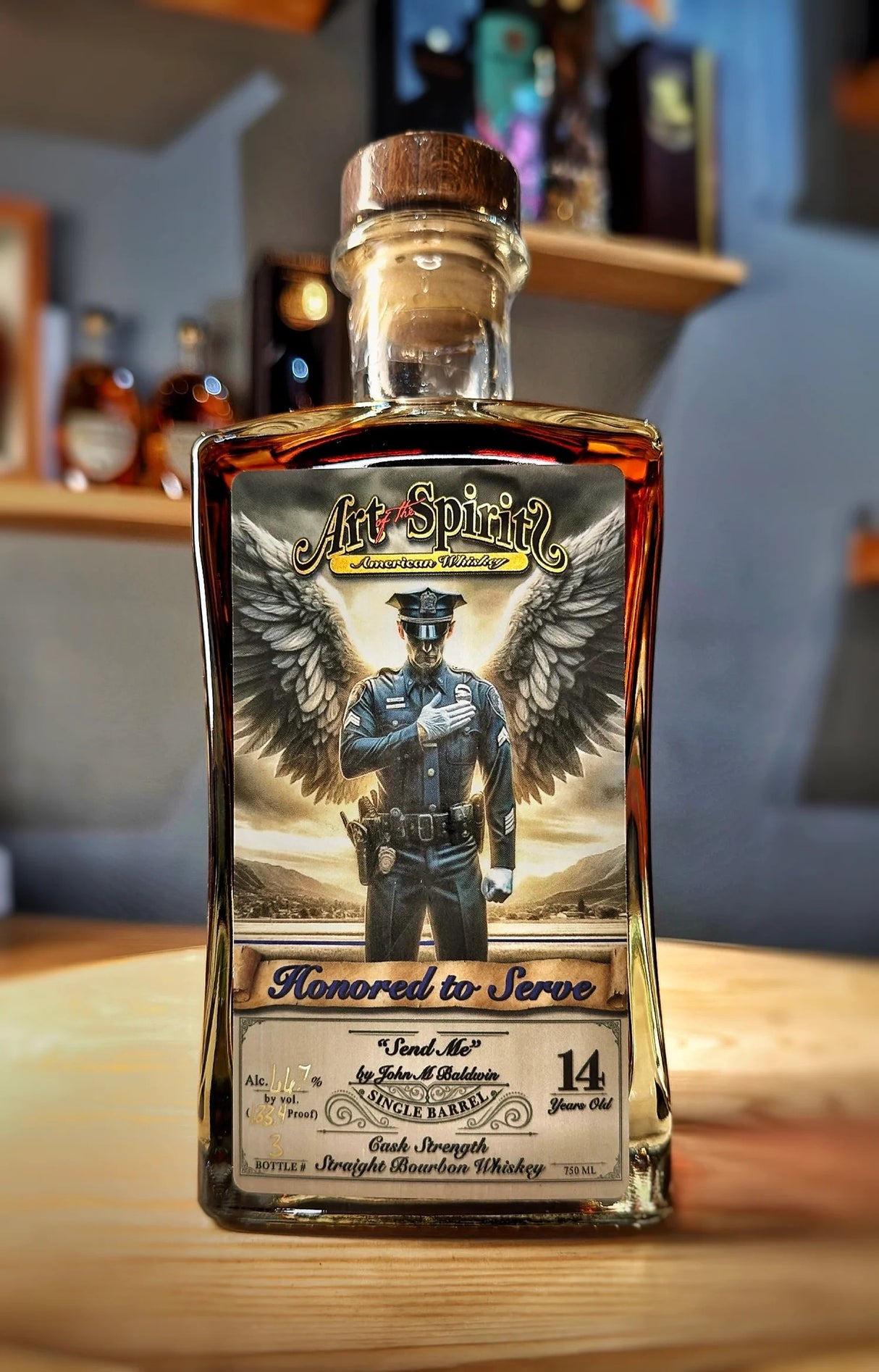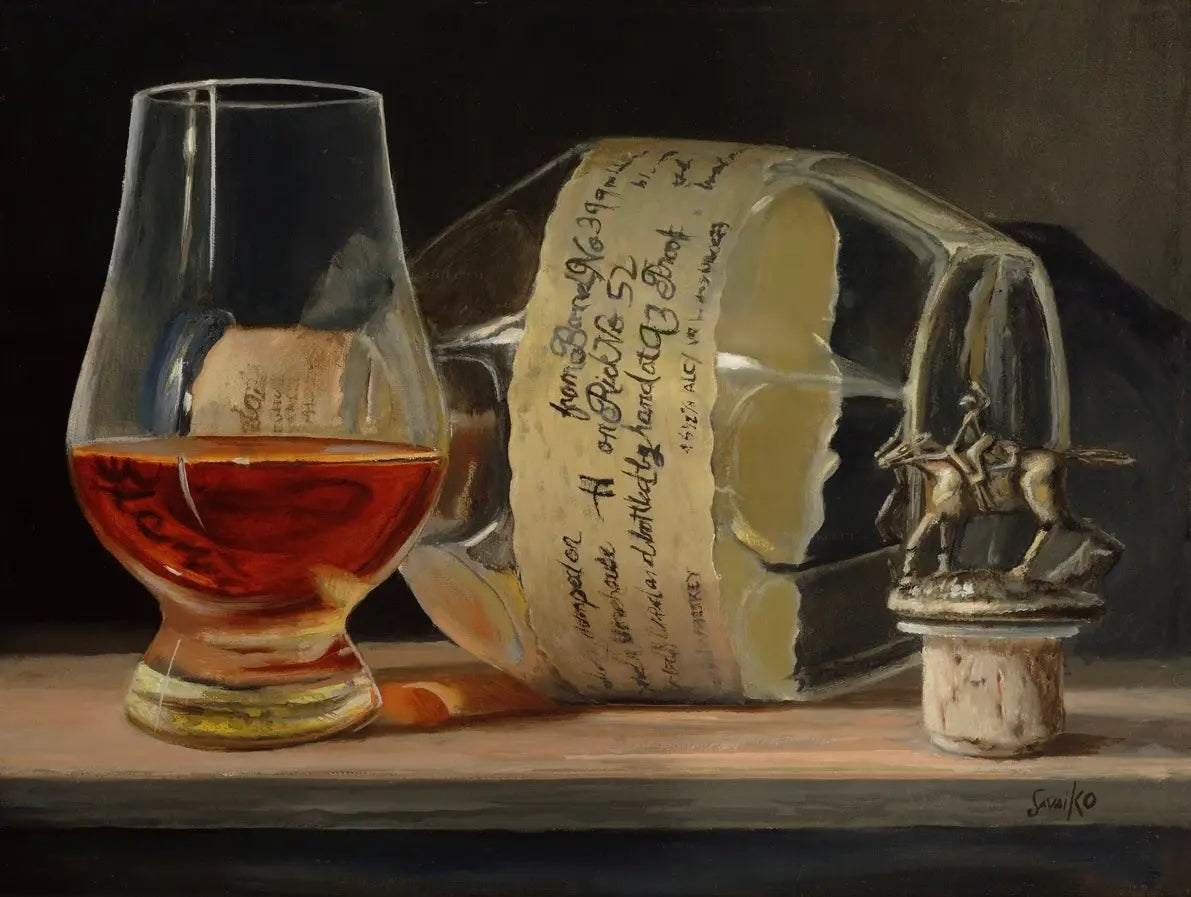Bourbon Art in Contemporary Society: Where Tradition Satisfies Development
Bourbon Art in Contemporary Society: Where Tradition Satisfies Development
Blog Article
The Relevance of Whiskey Art in Celebrating Heritage and Craftsmanship in the Beverage Sector
The intricate relationship between scotch art and the party of heritage and workmanship within the drink sector can not be overemphasized. With attentively developed tags and bottles, bourbon brand names encapsulate their historical origins and the artisanal skills that specify their manufacturing techniques. This creative measurement not only boosts market appeal yet additionally works as an avenue for social narration, cultivating a deeper connection between the craft and the consumer. As we discover the various elements of this topic, appealing inquiries regarding the impact of contemporary patterns on typical practices develop, motivating additional evaluation.
The Historical Origins of Whiskey
At the heart of scotch's attraction exists a rich tapestry of historic roots that map back to ancient human beings. The beginnings of bourbon can be connected to the distillation techniques of the Sumerians and Babylonians around 2000 BCE, where early kinds of fermented grain beverages started to arise. However, it was in the Center Ages that the art of purification developed substantially, particularly in Ireland and Scotland, bring about the creation of whiskey as we know it today.
The term "scotch" itself stems from the Gaelic word "uisce beatha," meaning "water of life." This expression highlights the social significance of scotch in Celtic societies, where it was commonly connected with routines, celebrations, and public bonding. By the 15th century, purification became an identified craft within monastic communities, leading the way for the facility of legal distilleries.
As profession courses increased, whiskey's appeal expanded, going beyond local boundaries and capturing the interest of lovers worldwide. Realism Art. This historical journey reflects not just the craftsmanship behind whiskey manufacturing yet additionally its indispensable duty in social and social contexts, marking it as a significant drink throughout history
Artistic Expression in Branding
Scotch branding stands as an engaging junction of artistry and business, where visual identification plays an important role fit customer perception. The visual appeals of bourbon labels, product packaging, and advertising and marketing materials mirror not only the brand's story but additionally its core values and heritage. With creative expression, distilleries share a story that reverberates with customers, stimulating emotions and triggering links.
Making use of color, typography, and imagery in branding serves to separate items in a saturated market. As an example, traditional themes might evoke a sense of credibility and workmanship, while contemporary styles can indicate development and forward-thinking. This tactical creative instructions improves brand acknowledgment and commitment, permitting customers to create a personal partnership with the scotch they pick.
Furthermore, imaginative expression in branding typically works as a celebration of local heritage. Distilleries often integrate local icons or historic recommendations right into their designs, producing a feeling of place that invites customers to partake in a more comprehensive cultural experience. Inevitably, the artistry behind whiskey branding not just enhances visual allure however likewise enriches the overall narrative of the brand name, promoting a much deeper gratitude for the workmanship and heritage ingrained in each container.
Workmanship in Bottle Style
The creativity evident in whiskey branding expands past aesthetic identification to include the workmanship involved in bottle design. Each container acts as a vessel not simply for the spirit within, but likewise for the tale it informs about its practice, quality, and origin. The style process requires careful interest to detail, as elements such as shape, closure, and material contribute significantly to the general perception of the scotch.
Craftsmanship in bottle style includes selecting high-quality glass that can improve the scotch's color and quality, while additionally giving a responsive experience for the consumer. The silhouette of the container need to be both functional and cosmetically appealing, frequently showing the heritage of the brand. Lots of distilleries choose for distinct shapes or printed logos that evoke a feeling Get the facts of credibility and history.
In addition, the label style and typography play a vital function in connecting the brand's narrative. Limited Edition. A well-crafted bottle not only astounds the consumer's eye but also reinforces the brand's dedication to quality and custom. By doing this, the craftsmanship of container layout becomes an important facet of the scotch experience, merging virtuosity with a profound respect for heritage
Social Relevance of Whiskey Art
Commemorating practice and craftsmanship, the social significance of scotch art goes beyond simple appearances, intertwining with the historical and social narratives of the regions from which it stems. Each bottle functions as a canvas, depicting the special stories, folklore, and traditions that have actually formed local whiskey-making techniques. The intricate designs usually reflect the heritage of the distillers, incorporating signs and concepts that reverberate with the culture and values of their areas.

On top of that, bourbon art plays an important function in public celebrations and parties, serving as a concrete link between people and their shared experiences. By valuing the creativity in whiskey packaging, customers cultivate a much deeper understanding and respect for the craft, eventually enriching their enjoyment of the drink itself.
Modern Trends in Whiskey Discussion
In the last few years, the presentation of whiskey has advanced to show modern preferences and patterns while still honoring conventional workmanship - Whiskey Art. Distilleries are increasingly concentrating on aesthetic aspects that enhance the general drinking experience, linking the gap between click resources heritage and modernity
Innovative container layouts have actually arised, usually incorporating lasting materials and imaginative labels that inform engaging stories. Several brand names now team up with neighborhood musicians, instilling their items with special aesthetic expressions that reverberate with customers. In addition, limited-edition releases are usually packaged in collectible containers, including value and allure for aficionados.

Final Thought
Finally, scotch art acts as a crucial channel for revealing the heritage and craftsmanship fundamental in the drink market. With complex branding, cutting-edge bottle designs, and culturally substantial creative elements, whiskey brands efficiently honor their traditions and connect with consumers. This creative story not just boosts the recognition of bourbon but also strengthens community identification and satisfaction among manufacturers. Ultimately, whiskey art plays a vital duty in preserving and celebrating the rich social tapestry of whiskey-making.


Craftsmanship in container style entails selecting high-grade glass that can improve the whiskey's shade and quality, while likewise supplying a tactile experience for the consumer. In this way, the craftsmanship of bottle design comes to be an essential facet of the bourbon experience, merging artistry with an extensive regard for heritage.
In verdict, bourbon art serves as a vital channel for sharing the heritage and craftsmanship integral in the beverage sector.
Report this page